
THE COLLECTED WRITINGS OF MURRAY STEIN: VOLUME 8 – PSYCHOLOGY AND SPIRITUALITY
While the Jungian approach to spirituality departs from specific religious beliefs and practices and does not privilege any in particular, it retains an attitude of respect for the variety of experiences of the numinous and for all God images. Spirituality is a central feature of the individuation process. The essays in this volume of The Collected Writings of Murray Stein are dedicated to reflecting on and expanding this core principle.
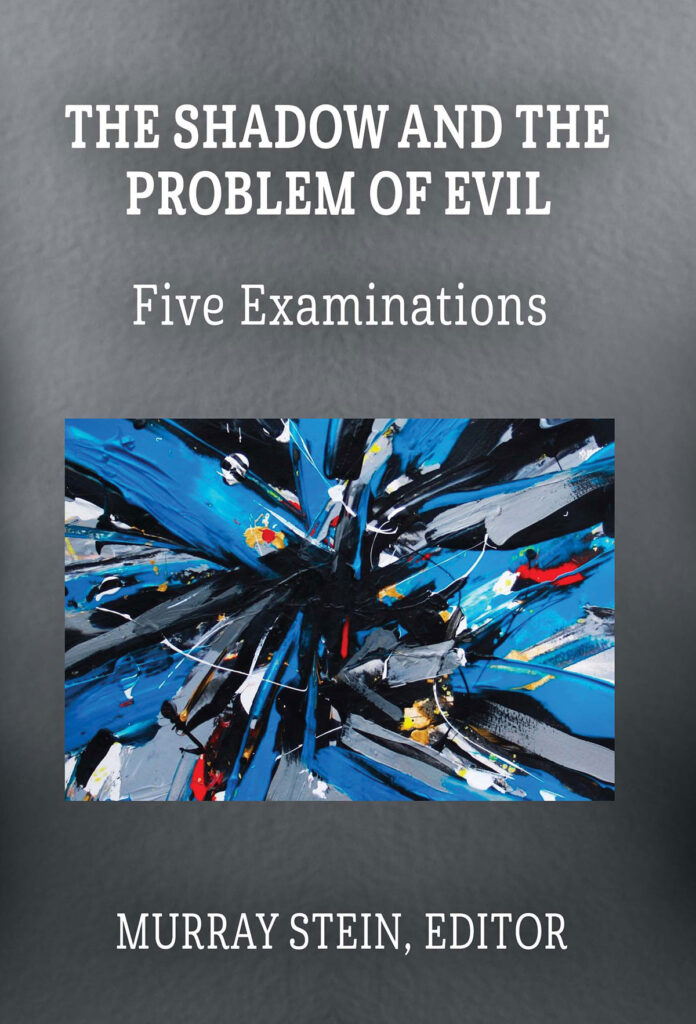
The Shadow And The Problem Of Evil: Five Examinations
The Shadow And The Problem Of Evil: Five Examinations is a captivating and thought-provoking journey into the hidden recesses of the human psyche. Through a Jungian perspective, it offers insights into the nature of evil, the symbols that represent our shadows, and the profound impact of these hidden aspects on society and our ethical choices. It’s a must-read for those seeking a deeper understanding of the human condition and the challenges we face in the modern world.
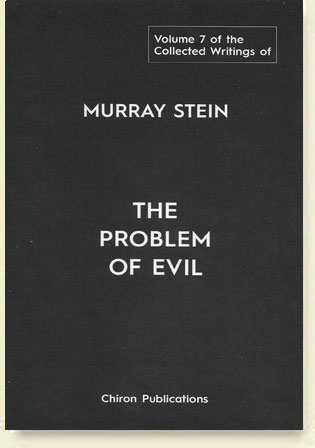
The Collected Writings of Murray Stein: Vol. 7: The Problem of Evil
Dr. Murray Stein’s prolific career has produced a substantial body of writings, lectures, and interviews. His writings, captured in these volumes, span a wide domain of topics including Christianity, individuation, midlife, the practice of analytical psychology, and topics in contemporary society. His deep understanding of analytical psychology is much more than an academic discourse, but rather a deeply personal study of Jung that spans nearly half a century.
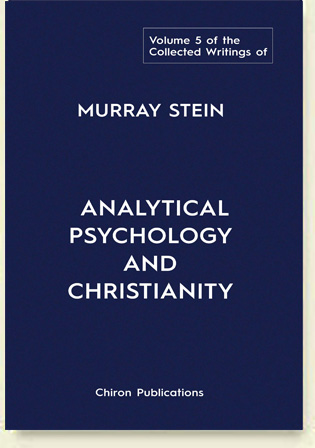
Analytical Psychology And CHRISTIANITY
This volume of the Collected Writings of Murray Stein contains the authors works on the topic of C.G. Jung’s personal relationship to his own religious tradition and his analysis and critique of Christian theology and practice. These were topics that preoccupied Jung’s mind during the entire course of his adulthood. The author argues that Jung’s constructive suggestions can be of assistance to Christianity in the 21st Century and beyond.
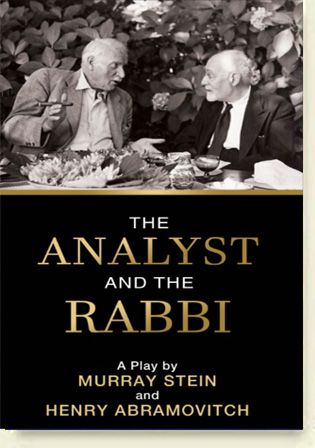
THE ANALYST AND THE RABBI
A meeting between C.G. Jung and Rabbi Leo Baeck took place in Zurich in October 1946 at the Savoy Hotel Baur en Ville. Very little is actually known about this meeting. There are no extant notes or reports from the principals indicating what was said or discussed. There was no secretary present taking down minutes of the conversation. What is known from the few documents attesting to this meeting is that it took place at Jung’s request and that Baeck did not wish to meet with Jung. The play is an imaginative construction of what might have happened in this historic meeting of two great men.
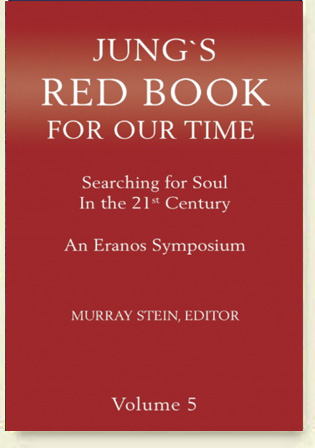
JUNG’S RED BOOK FOR OUR TIME
Do we, like Jung, need to leave the spirit of the time and follow the spirit of the depths, to call out “my soul, where are you?” through the windows of our now post-modern homes? We live in a digital world of incredible virtual inter-connectedness but at the same time fragmented and divided on many levels, including the psychological. The pace of life is rapid and ever accelerating. The spirit of the time is flux: It twitters. There is no sense of coherence in the whole. The guidance of a transcendent North Star is invisible to the naked eye of consciousness.
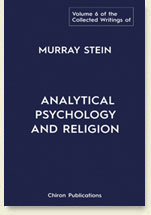
Analytical Psychology And Religion
Analytical Psychology and Religion is the sixth volume of the Collected Writings of Murray Stein. It includes works on the Bible from a depth psychological perspective, the relationship between some Jungian concepts and religious doctrines such as Divine Providence and the human as imago Dei, and a reflection on the dialogical relationship between analytical psychology and religion.
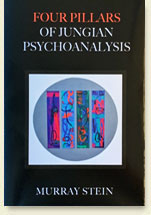
Four Pillars of Jungian Psychoanalysis
The Four Pillars of Jungian Psychoanalysis is a work that describes the methods that in combination sets this form of psychotherapy apart from all the others. The first chapter describes how the theory of individuation serves as an assessment tool for the analyst and guides the process toward the client’s further psychological development. The second chapter, on the analytic relationship, discusses the depth psychological understanding of the healing effect of the therapeutic encounter. Working with dreams and active imagination comprise the other two chapters. In both of these chapters, there is detailed discussions of how these methods are used in Jungian psychoanalysis and to what purpose. It is the combination of “the four pillars” that makes Jungian psychoanalysis unique.
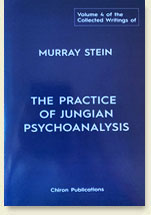
The Collected Writings of Murray Stein: Volume 4 – Individuation
The Practice of Jungian Psychoanalysis is the fourth volume in The Collected Writings of Murray Stein. It includes works by the author with special relevance to analytic practice. Among them are the Ghost Ranch papers from 1983-1992, essays on transference and types of countertransference, the problem of sleepiness in analysis, sibling rivalry and envy, the aims of analysis, the faith of the analyst, and reflections on spirituality in analysis.

The Collected Writings of Murray Stein: Volume 3 – Transformation
Transformation is a word used often in discussions of psychological and spiritual development. The works in this collection are directed at an assessment of this developmental process on a personal, individual level as well as on a cultural level. These works extend from consideration of transformation in the lives of great figures like Rilke, Rembrandt, Picasso, Jung, and Dante to cultural topics like the changing God image in modern times. With the world in flux, transformation is a topic of relevance on many levels of human existence.
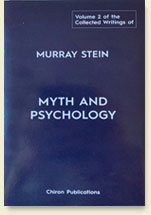
The Collected Writings of Murray Stein: Volume 2 – Myth and Psychology
This volume of the Collected Writings consists of psychological reflections on classical mythology for insight into archetypal structures and dynamics that play out in contemporary life. Mythology is an important resource for depth psychology, and the works included in this volume are a contribution to the archetypal perspective on psyche inspired by the works of C.G. Jung, James Hillman, and Raphael Lopez-Pedraza.
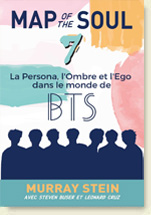
Map of the Soul – 7: Persona, Shadow & Ego in the World of BTS
Map of the Soul : 7 is a capstone of a 2-album project intended to reveal the inner landscape of the human soul that is packed with rich symbolism and woven together with BTS’s signature sound and moves. Starting with the lyrics, this book launches into a deep, engaging examination of the album in the light of the psychology of Swiss psychiatrist Carl Jung. The many layers of meaning embedded in the number 7 are brought to light, along with several fundamental concepts of Jungian psychology.
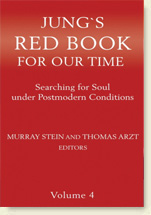
Jung’s Red Book for Our Time: Searching for Soul Under Postmodern Conditions Volume 4
The spiritual malaise regnant in today’s disenchanted world presents a picture of “a polar night of icy darkness,” as Max Weber wrote already a century ago. This collective dark night of the soul is driven by climate change-related disasters, rapid technological innovations, and opaque geostrategic realignments. In the wake of what policy analysts refer to as “Westlessness,” the postmodern age is characterized by incessant distractions, urgent calls to responsibility, and in-humanly short deadlines, which result in a general state of exhaustion and burnout. The hovering sense of living in a time frame that is post-histoire induces states of confusion on a personal level as well as in the realm of politics.
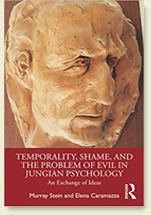
Temporality, Shame, and the Problem of Evil in Jungian Psychology
In a unique epistolary style, authors Murray Stein and Elena Caramazza share their rich and reflective conversations surrounding the themes of temporality, shame, and evil through letters, essays, and email correspondence. Ignited by Wolfgang Pauli’s “The Piano Lesson,” Stein and Caramazza study the function of temporality and consider the importance of shame and evil to this relationship. In this book Stein shows how Pauli, as a result of his contact with C.G. Jung and analytical psychology, embarked on a thought experiment to merge two currents of scientific thought: quantum physics and depth psychology.
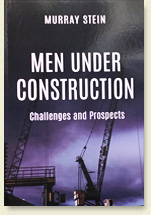
Men Under Construction: Challenges and Prospects
Today more than ever men are challenged to take steps toward greater consciousness and psychological development. In these lectures Murray Stein describes five “eras” or stages in a lifelong process of psychological and spiritual growth, as well as speaking about friendship between men and the archetypal gestures of fathering. The lectures are intended to help men of all ages to orient themselves in their lives as they search for meaning and seek personal development.
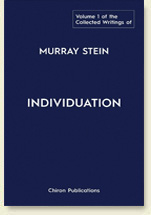
The Collected Writings of Murray Stein: Volume 1 – Individuation
Chiron Publications is honored to publish the Collected Writings of Murray Stein. Volume 1 – Individuation in hardcover is now available for purchase. Dr. Stein’s prolific career has produced a substantial body of writings, lectures, and interviews. His writings, captured in these volumes, span a wide domain of topics that include writings on Christianity, Individuation, Mid-life, the practice of Analytical Psychology, and topics in contemporary society. His deep understanding of Analytical Psychology is much more than an academic discourse, but rather a deeply personal study of Jung that spans nearly half a century. The unifying theme of the papers collected in this volume is the individuation process as outlined by C.G. Jung and adopted and extended by later generations of scholars and psychoanalysts working in the field of analytical psychology. Individuation is a major contribution to developmental psychology and encompasses the entire lifetime no matter its duration. The unique feature of this notion of human development is that it includes spiritual as well as psychosocial features. The essays in this volume explain and expand on Jung’s fundamental contributions.
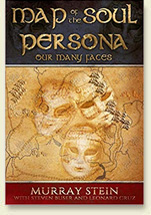
Map of the Soul – Persona: Our Many Faces
There is a lot of interest in today’s culture about the idea of Persona and the psychological mapping of one’s inner world. In fact, the interest is so strong that the superstar Korean Pop band, BTS, has taken Dr. Murray Stein’s concepts and woven them into the title and lyrics of their latest album, Map of the Soul:Persona.
What is our persona and how does it affect our life’s journey? What masks do we wear as we engage those around us? Our persona is ultimately how we relate to the world. Combined with our ego, shadow, anima and other intra-psychic elements it creates an internal map of the soul.
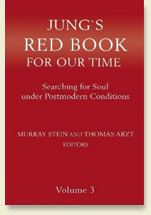
Jung’s Red Book For Our Time. Vol.3
The Red Book can be considered as a contribution to the “Golden Chain” (aurea catena) of the world’s imaginative literature reaching back to the ancient Sumerian Epic Of Gilgamesh. As Jung describes this tradition in a letter to Max Rychner, “Faust is the most recent pillar in that bridge of the spirit wich spans the morass of world history, beginning with the Gilgamesh epic, the I Ching, the Upanishads, the Tao-te-Ching, the fragments of Heraclitus, and continuing in the Gospel of St.John, the letters of St.Paul, in Meister Eckhart and in Dante.” The Red Book extends the “Golden Chain” into our era.
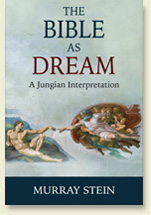
The Bible As Dream A Jungian Interpretation
Murray Stein shares these timeless lectures–a work of respectful and loving interpretation. The Bible presents a world elaborated with reference to a specific God image. As the mythographer Karl Kerenyi puts it in writing about the Greek gods and goddesses, every god and every goddess constitutes a world. So it is too with the biblival God, whose name Stein exceptionally capitalizes throughout out of cultural respect.
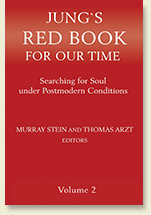
Jung’s Red Book For Our Time. Vol.2
Edited by Murray Stein and Thomas Arzt, the essays in the series Jung’s Red Book for Our Time: Searching for Soul under Postmodern Conditions are geared to the recognition that the posthumous publication of The Red Book: Liber Novus by C. G. Jung in 2009 was a meaningful gift to our contemporary world. “To give birth to the ancient in a new time is creation,” Jung inscribed in his Red Book. The essays in this volume continue what was begun in Volume 1 of Jung’s Red Book for Our Time: Searching for Soul under Postmodern Conditions by further contextualizing The Red Book culturally and interpreting it for our time. It is significant that this long sequestered work was published during a period in human history marked by disruption, cultural disintegration, broken boundaries, and acute anxiety. The Red Book offers an antidote for this collective illness and can be seen as a link in the aurea catena, the “golden chain” of spiritual wisdom extending down through the ages from biblical times, ancient Greek philosophy, early Christian and Jewish Gnosis, and alchemy. The Red Book is itself a work of creation that gives birth to the old in a new time.
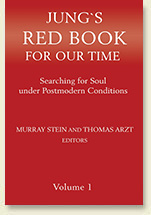
Jung’s Red Book For Our Time. Vol.1
The essays in this volume are geared to the recognition that the posthumous publication of The Red Book: Liber Novus by C. G. Jung in 2009 was a meaningful gift to our contemporary world. Similar to the volatile times Jung found himself in when he created this work a century ago, we today too are confronted with highly turbulent and uncertain conditions of world affairs that threaten any sense of coherent meaning, personally and collectively. The Red Book promises to become an epochal opus for the 21st century in that it offers us guidance for finding soul under postmodern conditions. This is the first volume of a three-volume series set up on a global and multicultural level and compiling essays from distinguished Jungian analysts and scholars.
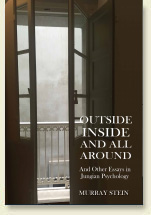
Outside Inside And All Around
In these late essays, Murray Stein circles around familiar Jungian themes such as synchronicity, individuation, archetypal image and symbol with a view to bringing these ideas into today’s largely globalized cultural space. These are reflections for our time, drawing importantly on the works of C.G. Jung, Erich Neumann, Wolfgang Pauli and a wide range of contemporary Jungian psychoanalytic writers. The general thesis is that all of humanity is connected—to one another, to nature and to the cosmos—and no human being should be left out of the picture of postmodern consciousness.
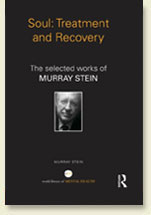
| SOUL: TREATMENT AND RECOVERY |
Murray Stein is well-known as an insightful and pioneering author and academic. Soul: Treatment and Recovery presents a selection of papers and book chapters spanning his career from 1973 to 2012. The chapters included in this collection speak for Stein’s hope that individuals and humanity as a whole can evolve toward greater consciousness and awareness of meaning in daily life.
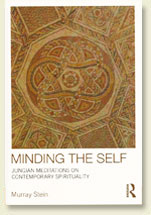
Minding The Self
Many people have an aptitude for religious experience and spirituality but don’t know how to develop this or take it further. Modern societies offer little assistance, and traditional religions are overly preoccupied with their own organizational survival. Minding the Self: Jungian meditations on contemporary spirituality offers suggestions for individual spiritual development in our modern and post-modern times. Here, Murray Stein argues that C.G. Jung and depth psychology provide guidance and the foundation for a new kind of modern spirituality.
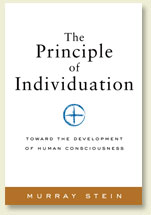
The Principle of Individuation
The book describes a method for people to discover the truth about who and what they essentially are, beyond a name, a social status, a role in family and community. As a method, individuation is akin to meditation, but it includes action, the transpersonal and mythic, and psychological development throughout a lifetime.
The book also speaks of nations, cultures, and religious traditions changing and becoming, filling in the empty spaces and fulfilling their destinies. The principle of individuation can be used to guide politics and decision-making on a global level, to promote the development and integration of humanity as a whole.
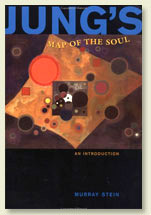
Jung’s Map of the Soul
“A guide for the beginner and for the serious student of Jung, as well as an excellent review of Jung’s theories for the seasoned scholar. Jung’s Map of the Soul is the most important book on Jung’s psychology to have come out in years. It is enlightening both for those who want to understand Jung, and for those who think that they already do.” June Singer.
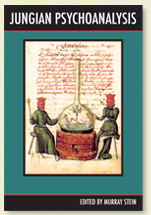
Jungian Psychoanalysis
With major essays written by nearly forty distinguished international Jungian psychoanalysts and extensive introductions by Murray Stein, Jungian Psychoanalysis is a definitive guide for analytic practice and the theoretical framework that supports it. It can be used in Jungian training programs and to introduce other therapists to Jungian techniques. All the chapters are written in a direct and comprehensible style suitable for the general reader who wants to be informed of contemporary Jungian thinking.
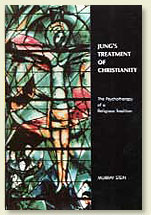
jung’s Treatment of Christianity
An interpretation of Jung’s encounter with Christianity based on his clinical approach to psychotherapy patients. In the last 20 years of his life, Jung wrote extensively on the Trinity, the Mass, heries such as alchemy, and the Bible. Stein understands these as an effort to offer psychotherapeutic treatment to an ailing Christianity and to help this religious tradition evolve into its next stage of development. Here, Stein provides a comprehensive analysis of Jung’s writings on Christianity in relation to his personal life, psychological thought and efforts to transform Western culture and religion.
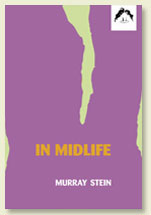
In Midlife
Midlife: crisis, anger, change… Drawing on analytic experience, dreams, and myths, Stein formulates the three main features of the middle passage. First an erosion of attachments. Then hints of a fresh spirit – renegade and mischievous – that scoffs at routines. This new spirit disrupts life and alarms family and friends. Finally, with luck, a transformation occurs; life beings anew.
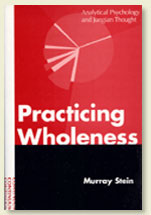
Practicing Wholeness
Practicing wholeness is an everyday activity. Contents of this book include “The dream of wholeness,” “Symbols as transformers of the psyche,” “Practicing wholeness in organizations.” Other chapters are clinically focused: “Three types of countertransference,” “Envy and sibling rivalry as block to wholeness,” “Amor fati: analysis and the search for personal destiny.” Stein argues that practicing wholeness is relevant to many areas of life: our private inner worlds, our religious believes, our organizational involvements, and our cultural paradigms.
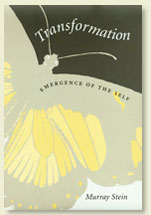
Transformation Emergence of the Self
“Although many important books have emerged from the field of analytical psychology…since Jung’s death, I have encountered none that speaks more directly to the needs of the soul in our time than Murray Stein’s new and exciting book Transformation…this 148-page artfully argued tour de force…I believe to be Stein’s master work…” Steven B. Herrmann, San Francisco Jung Institute Library Journal.
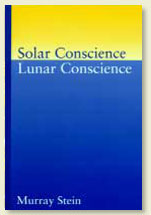
Solar Conscience Lunar Conscience
This is an essay on the psychological foundations of morality, lawfulness, and the sense of justice. Using case studies from clinical practice, biographies of well-known persons, and myth, Stein discusses the complexity of conscience and illustrates the distinction between two poles of conscience – the one embedded in human community, the other in the collective unconscious.